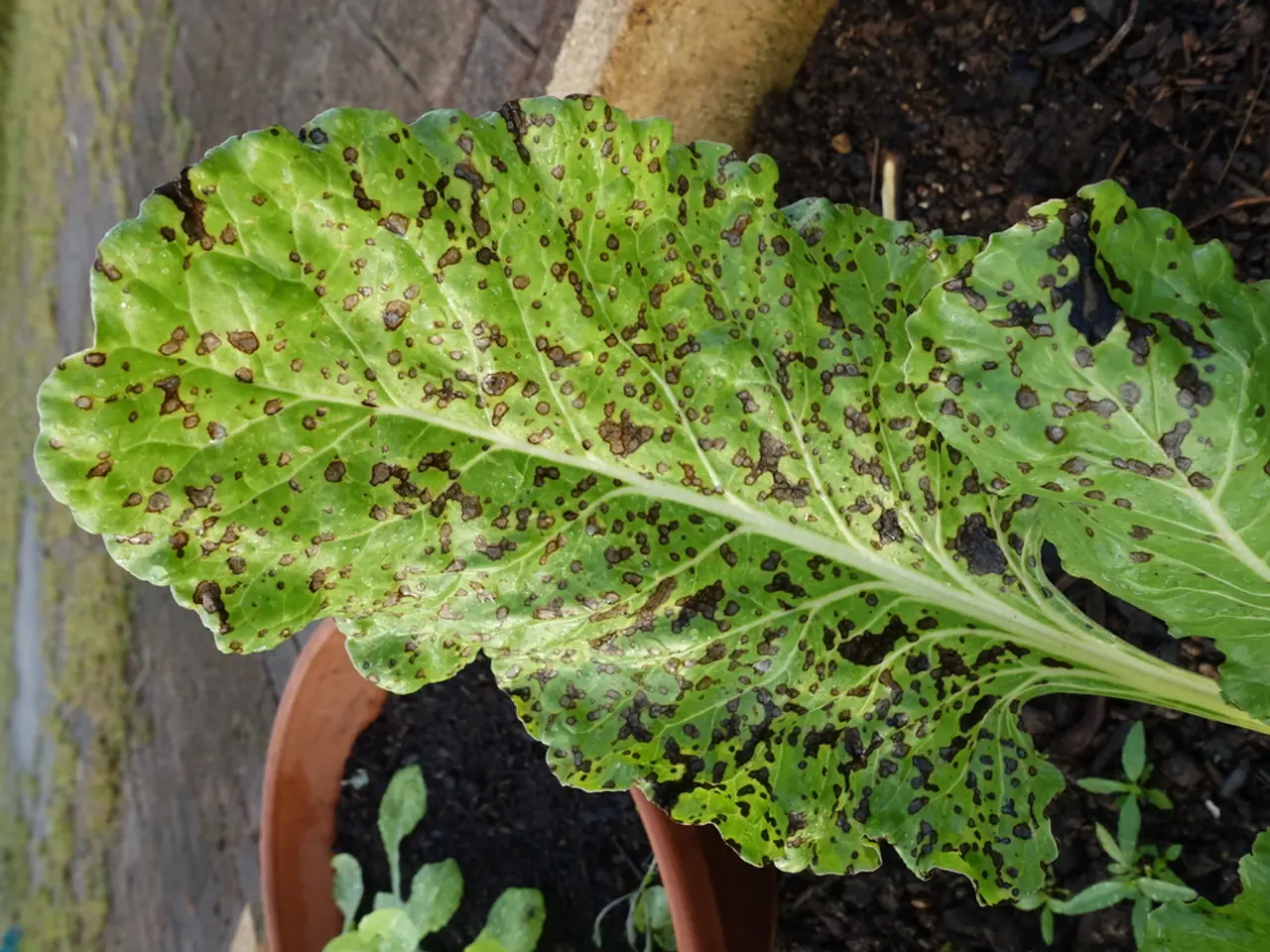Destructive Blight Affecting Cruciferous Vegetables, Known as Black Rot of Brassicas
Managing Black Rot in Crucifer Vegetables
Black rot, a bacterial disease that affects a variety of cruciferous plants, can be a significant challenge for gardeners and farmers alike. However, by adopting a combination of cultural practices and growing resistant varieties, it is possible to effectively control and manage this disease.
Cultural Practices
- Crop Rotation: Rotating crucifer crops with non-host crops helps break the disease cycle. The bacterium that causes black rot survives in crop residue and cruciferous weeds for up to two years. By changing the crop, you can prevent the pathogen from persisting in the soil.
- Removal of Infected Plant Material: Regularly removing and destroying infested crop debris and weeds like wild radish, black mustard, and peppergrass is crucial. These serve as reservoirs for the pathogen.
- Use of Clean Seeds and Seedlings: Since the bacterium can be seed-borne, using certified disease-free seeds and seedlings reduces the risk of initial infection.
- Avoid Overhead Irrigation: Reducing leaf wetness by avoiding overhead irrigation during evening or wet conditions helps minimize bacterial spread through water splash.
- Manage Planting Density and Improve Air Circulation: Proper spacing and pruning increase airflow, lowering humidity in the canopy, which discourages bacterial growth.
- Balanced Fertilization: Avoid excessive nitrogen, as it promotes lush growth that is more susceptible to infection and pest infestation.
- Field Sanitation: Clean tools, machinery, and equipment between uses to prevent mechanical spread.
Resistant Varieties
Growing crucifer varieties known for resistance or tolerance to black rot can significantly reduce disease incidence. Consult local extension services or seed suppliers for recommended varieties suitable for your region and crop type (cabbage, cauliflower, broccoli, etc.).
Additional Management
- Regular Monitoring: Monitor crops regularly for early detection. Early intervention can limit the spread of black rot.
- Advanced Monitoring Tools: Some reports recommend integrating advanced monitoring tools, such as satellite and AI-driven pest advisory systems, to anticipate outbreaks and optimize management timing.
In summary, managing black rot in crucifers involves breaking the disease cycle with crop rotation, sanitation, and removal of disease sources; reducing conducive environmental conditions like leaf wetness; using resistant varieties; and early detection with vigilant crop monitoring. Implementing these combined cultural and genetic control measures provides effective suppression of black rot bacterial disease.
Embracing science and health-and-wellness practices, therapies-and-treatments like incorporating resistant plants can play a crucial role in managing black rot. For instance, growing black rot-resistant cultivars of plants such as cabbage, cauliflower, and broccoli can significantly reduce the disease's impact. Additionally, adopting preventive measures, such as soil management practices that include rotating crops, using clean seeds, and managing planting density, can create an environment less conducive to the growth of the disease-causing bacteria. Lastly, utilizing advanced monitoring tools from health-and-wellness technology could aid in the early detection of black rot, further enhancing disease management efforts.




